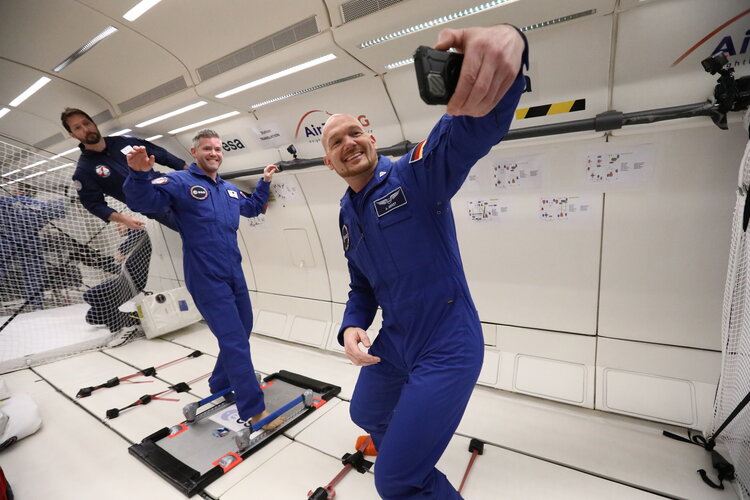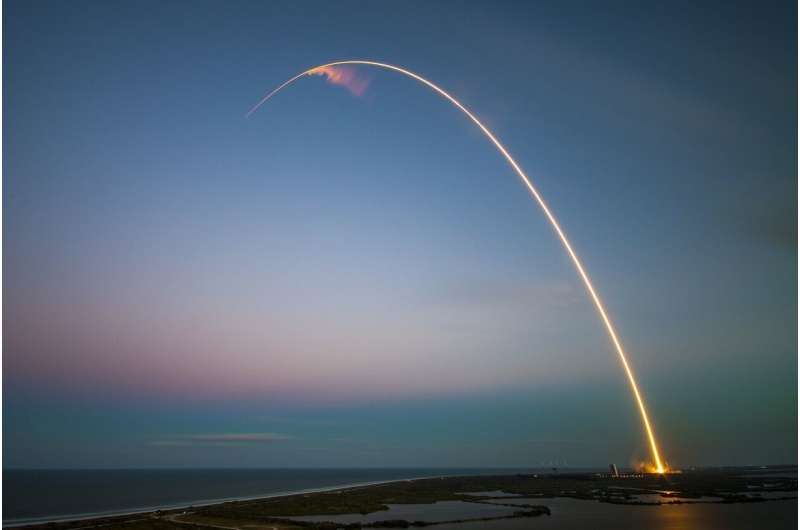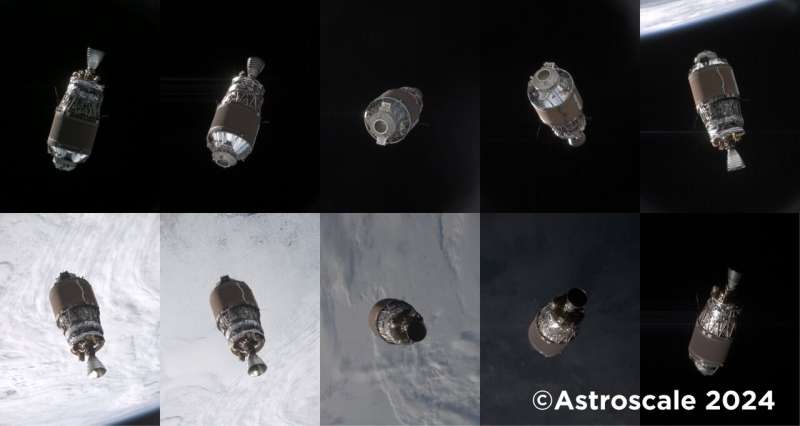
Copernical Team
Space is not the limit
 Image:
Space is not the limit
Image:
Space is not the limit After debris concerns, SpaceX to shift Dragon capsule landings from Florida to California

Evidence of debris stemming from return trips of SpaceX Dragon spacecraft has prompted the company to shift future landing operations from Florida to California.
The move was announced Friday during NASA's press conference previewing the upcoming Crew-9 mission to the International Space Station, and it won't take effect until 2025 after Crew-9 has returned.
"After five years of splashing down off the coast of Florida, we've decided to ship Dragon recovery operations back to the West coast," said Sarah Walker, SpaceX's director of Dragon mission management.
This includes both cargo and crew versions of its spacecraft.
At issue is the trunk portion of the Dragon capsule that is discarded before reentry and splashdown. Initially, the cargo version of Dragon made returns in the Pacific 21 times from 2011-2020, but when crew capability came online, SpaceX made the shift to allow for capsule landings off the coast of Florida either in the Atlantic or Gulf of Mexico.
Feeding that decision were models that predicted how the trunk portion would break up in Earth's atmosphere.
"SpaceX and NASA engineering teams used these industry-standard models to understand the trunk's breakup characteristics, and they predicted the trunk would fully burn up due to the high temperatures that are created by air resistance during that high speed reentry into Earth's atmosphere," Walker said.
'The clock's already started': NASA counting down to most powerful human spaceflight ever

The launch clock isn't set yet, but the hardware is lined up for what would become the most powerful rocket to ever send humans into space during a moonbound trip the likes of which has not happened in more than 50 years.
The biggest piece of the Space Launch System rocket, the 212-foot-long core stage, crept its way into the massive Vehicle Assembly Building on July 24 where work will begin to prepare it for the Artemis II launch set for no earlier than September 2025.
"The clock's already started," NASA SLS program manager John Honeycutt said. "We've got a great deal of work to do to get the rocket ready to go fly."
The core stage sports four RS-25 engines converted by Melbourne-based L3Harris' Aerojet Rocketdyne from the retired stock of the Space Shuttle Program. Two of the engines have previously flown on a combined 20 shuttle missions while the other pair are making their debuts.
Engine 2047 flew on STS-135, the final launch of the program on Space Shuttle Atlantis in 2011.
Also no stranger to KSC are the casings from the two solid rocket boosters fabricated by Northrop Grumman.
Fly-around observation images of space debris released

The Japan Aerospace Exploration Agency (JAXA) has advanced the Commercial Removal of Debris Demonstration (CRD2) Phase I project. Under this initiative, the demonstration satellite ADRAS-J, developed by Astroscale Japan Inc., has successfully captured images of space debris, a non-cooperative target, through "Fly-around observation." These images have now been released by Astroscale Japan Inc.
The fly-around observation service is the third of the four services required by JAXA in CRD2 Phase I. This service involves pointing a camera at the target debris, maintaining a constant distance from it, and orbiting around the target debris to capture images from different directions.
Glimpses of Hera’s target asteroids inspire new science

As ESA’s Hera mission for planetary defence completes its pre-launch testing, its target asteroids have come into focus as tiny worldlets of their own. A special issue of Nature Communications published this week presents studies of the Didymos asteroid and its Dimorphos moon, based on the roughly five and a half minutes of close-range footage returned by NASA’s DART spacecraft before it impacted the latter body – along with post-impact images from the Italian Space Agency’s LICIACube.
GLOBE Alumna and Youth for Habitat Program Lead named Scientist of the Month in Alaska
 Monica Martinez, a dedicated GLOBE alumna and the current lead for the Youth for Habitat Program, has been honored as Scientist of the Month in Alaska. Martinez has been recognized for her significant contributions to environmental education and habitat conservation efforts.
"Being named Scientist of the Month is an incredible honor," Martinez said. "This recognition reflects the hard work
Monica Martinez, a dedicated GLOBE alumna and the current lead for the Youth for Habitat Program, has been honored as Scientist of the Month in Alaska. Martinez has been recognized for her significant contributions to environmental education and habitat conservation efforts.
"Being named Scientist of the Month is an incredible honor," Martinez said. "This recognition reflects the hard work Hughes introduces comprehensive cybersecurity solution for small businesses
 Hughes Network Systems, LLC (HUGHES), a leader in satellite and multi-transport technologies and networks for over five decades, has launched HughesON Cybersecurity for Small Business. This service suite is tailored to shield small enterprises from cyber threats.
Offering a spectrum of cybersecurity measures generally reserved for larger entities, HughesON Cybersecurity for Small Business
Hughes Network Systems, LLC (HUGHES), a leader in satellite and multi-transport technologies and networks for over five decades, has launched HughesON Cybersecurity for Small Business. This service suite is tailored to shield small enterprises from cyber threats.
Offering a spectrum of cybersecurity measures generally reserved for larger entities, HughesON Cybersecurity for Small Business ViaSat unveils wearable secure wireless hub for advanced network and Edge communications
 Viasat Inc., a global communications company, has announced the launch of its new Wearable Secure Wireless Hub, designed to enhance network and edge communications. This innovative device offers military personnel and first responders robust, secure, and reliable connectivity in challenging environments.
"Viasat's Wearable Secure Wireless Hub provides a critical advantage for individuals o
Viasat Inc., a global communications company, has announced the launch of its new Wearable Secure Wireless Hub, designed to enhance network and edge communications. This innovative device offers military personnel and first responders robust, secure, and reliable connectivity in challenging environments.
"Viasat's Wearable Secure Wireless Hub provides a critical advantage for individuals o ESA showcases space innovation at Gamescom
 The European Space Agency (ESA) is set to captivate audiences at Gamescom, the world's largest gaming event, with a dynamic display of space technology and innovation. Running from August 20-24 in Cologne, Germany, the event will highlight ESA's advancements in space exploration and how they intersect with the gaming industry.
ESA's booth will feature interactive exhibits, including virtua
The European Space Agency (ESA) is set to captivate audiences at Gamescom, the world's largest gaming event, with a dynamic display of space technology and innovation. Running from August 20-24 in Cologne, Germany, the event will highlight ESA's advancements in space exploration and how they intersect with the gaming industry.
ESA's booth will feature interactive exhibits, including virtua Astroscale launches SPACE PROTECTOR simulator to educate on space debris
 Astroscale has unveiled a new educational tool called "SPACE PROTECTOR by Astroscale" simulator game. SPACE PROTECTOR is a simulation game where players act as satellite operations engineers, using advanced robotics to capture inactive satellites in a realistic space setting. This game aims to educate players on the pressing issue of space debris.
With over 130 million pieces of debris orb
Astroscale has unveiled a new educational tool called "SPACE PROTECTOR by Astroscale" simulator game. SPACE PROTECTOR is a simulation game where players act as satellite operations engineers, using advanced robotics to capture inactive satellites in a realistic space setting. This game aims to educate players on the pressing issue of space debris.
With over 130 million pieces of debris orb 































